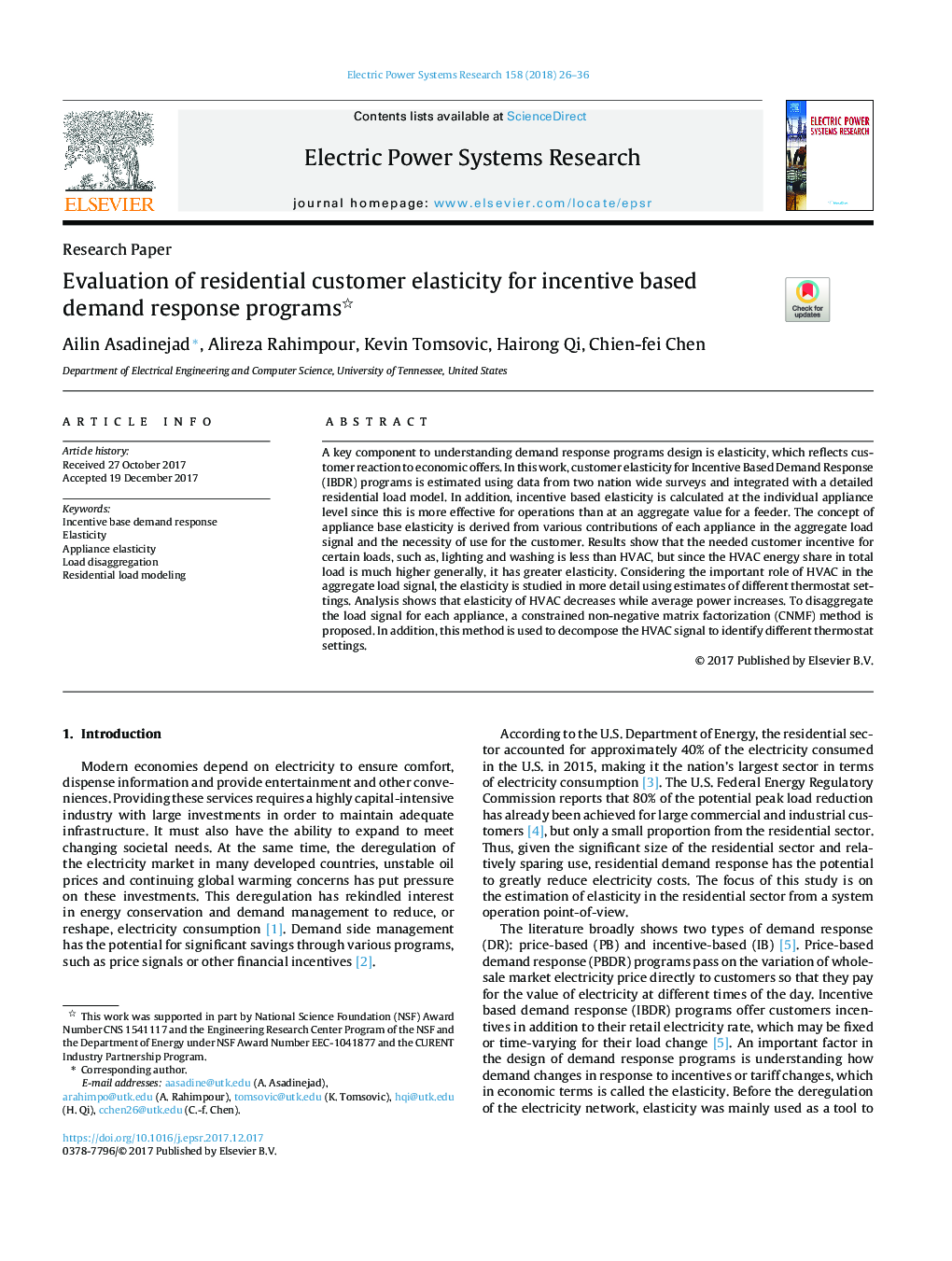| Article ID | Journal | Published Year | Pages | File Type |
|---|---|---|---|---|
| 7112250 | Electric Power Systems Research | 2018 | 11 Pages |
Abstract
A key component to understanding demand response programs design is elasticity, which reflects customer reaction to economic offers. In this work, customer elasticity for Incentive Based Demand Response (IBDR) programs is estimated using data from two nation wide surveys and integrated with a detailed residential load model. In addition, incentive based elasticity is calculated at the individual appliance level since this is more effective for operations than at an aggregate value for a feeder. The concept of appliance base elasticity is derived from various contributions of each appliance in the aggregate load signal and the necessity of use for the customer. Results show that the needed customer incentive for certain loads, such as, lighting and washing is less than HVAC, but since the HVAC energy share in total load is much higher generally, it has greater elasticity. Considering the important role of HVAC in the aggregate load signal, the elasticity is studied in more detail using estimates of different thermostat settings. Analysis shows that elasticity of HVAC decreases while average power increases. To disaggregate the load signal for each appliance, a constrained non-negative matrix factorization (CNMF) method is proposed. In addition, this method is used to decompose the HVAC signal to identify different thermostat settings.
Keywords
Related Topics
Physical Sciences and Engineering
Energy
Energy Engineering and Power Technology
Authors
Ailin Asadinejad, Alireza Rahimpour, Kevin Tomsovic, Hairong Qi, Chien-fei Chen,
